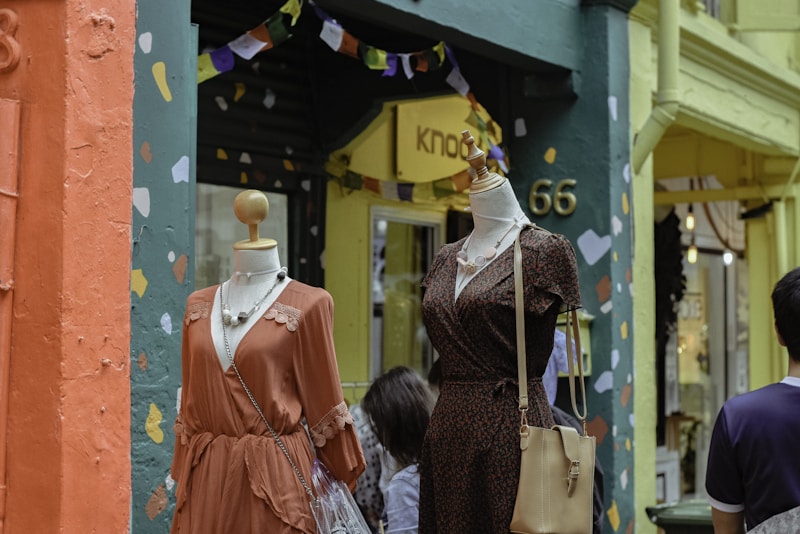How to Assess Fit During Dress Trials: A Comprehensive Guide
Introduction
Finding the perfect dress is not just about style; it's also about fit. Assessing fit during dress trials is essential to ensure that the garment flatters your body shape and feels comfortable. This article will delve into various aspects of assessing dress fit, providing insightful tips and expert advice to make your dress trial experience fruitful.
Understanding Dress Fit
Dress fit refers to how well a dress conforms to the body's contours, allowing for both style and comfort. Several factors influence dress fit, including fabric type, cut, measurement accuracy, and individual body shape. Let’s explore how to evaluate these aspects effectively during dress trials.
The Importance of Having Accurate Measurements
Before embarking on dress trials, it’s crucial to have accurate body measurements. This ensures that the dresses you try on will give a realistic idea of fit. Here are some key measurements to take:
| Measurement | Description |
| Chest/Bust | Measure around the widest part of the bust. |
| Waist | Measure around the narrowest part of the waist. |
| Hips | Measure around the widest part of the hips. |
| Length | Measure from the shoulder to the desired hemline. |
Trying on the Right Size
When you arrive at the boutique or store, make sure to select dresses in your expected size range. Remember that sizes can vary significantly across different brands. To ensure you are trying on dresses that fit well, do the following:
- Start with a size you normally wear: This is your baseline for fit.
- Experiment with different sizes: Don’t hesitate to try a size up or down. Sometimes a looser fit may look more flattering.
How to Assess the Fit During Trials
During dress trials, carefully evaluate how each dress fits. Here are some critical areas to focus on:
1. Overall Comfort
Your dress should feel comfortable whether you’re standing or moving around. Pay attention to any tugging or pulling in the fabric, which can indicate a poor fit.
2. Shoulder and Sleeve Fit
The shoulders of the dress should align comfortably with your own. If the dress pulls at the shoulders or if the sleeves are too tight, it may not be the right fit. Raise your arms to ensure the sleeves allow movement without discomfort.
3. Bodice and Waist Area
The bodice should hug your torso smoothly, emphasizing your shape without being too tight. The waistline should align with your natural waist. Remember to sit down and move around—this can greatly impact comfort.
4. Length of the Dress
Evaluate whether the dress length is appropriate for your body type and the occasion. For formal events, a longer length may be desired, while casual settings allow for shorter styles.
5. Fabric and Style
The type of fabric can affect how a dress drapes on your body. Lighter fabrics may cling, while heavier ones provide structure. Choose a style that complements your body shape; A-line dresses flatter many shapes, while fitted styles may be suited for curvier figures.

Additional Considerations During Dress Trials
While assessing the fit of your dress, consider these additional points:
- Body shape: Different styles suit different body shapes, such as hourglass, pear, or apple shapes. Knowing your body shape can help narrow down your choices.
- Support: If the dress has built-in support or boning, ensure it provides the right amount of shaping without feeling constricting.
- Hidden adjustments: Some dresses come with adjustable straps or ties; utilize these features to ensure the best fit.
Common Questions Regarding Dress Trials
What should I wear to a dress fitting?
Wear something comfortable and easy to change in and out of. A fitted top and bottoms can help assess how a dress will fit over your body shape.
How do I know if a dress can be altered?
Most dresses can be altered to some degree. However, be sure to check seams and construction; dresses with overall structure may be easier to adjust.
Should I stick to one style during the trials?
It’s wise to try multiple styles to understand what flatters your body best, even if you have a specific style in mind. You may find a design you hadn’t considered but that looks fantastic on you.
Conclusion: Mastering the Dress Trial Experience
Assessing fit during dress trials is an art that combines knowledge of your body, awareness of garment structure, and attention to detail. By following these guidelines, you’ll find the right dress that complements your figure and makes you feel confident. Remember to stay open to various styles and sizes and take your time. Happy dress hunting!
For a successful dress trial experience, consider visiting several boutiques and trying on different styles. Utilize the measurements you’ve taken and don’t hesitate to ask the fitting consultant for advice. Keep in mind that a perfect fit can often be achieved with minor alterations, making it important to choose a dress that feels "almost there," as opposed to pursuing perfection in the trials.